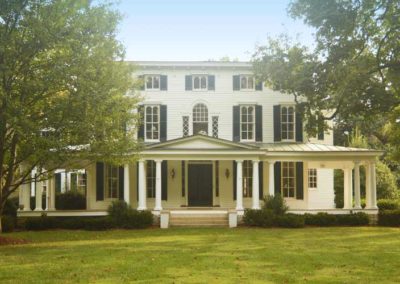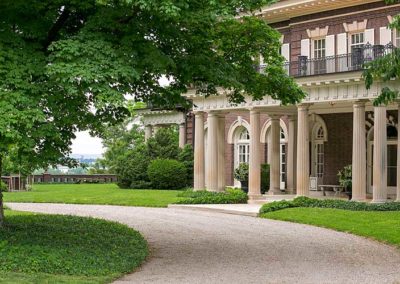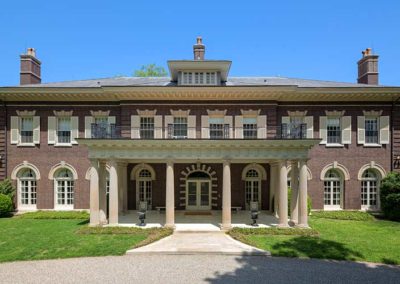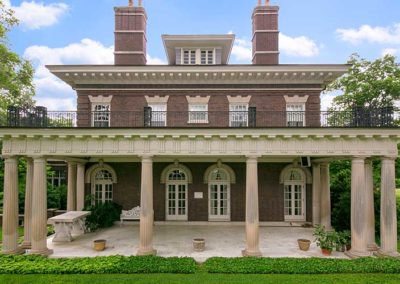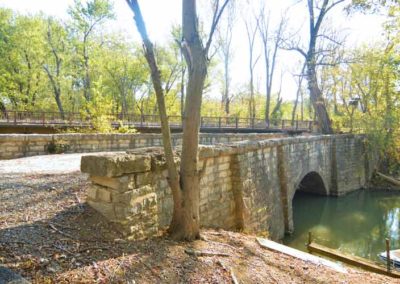Glenview
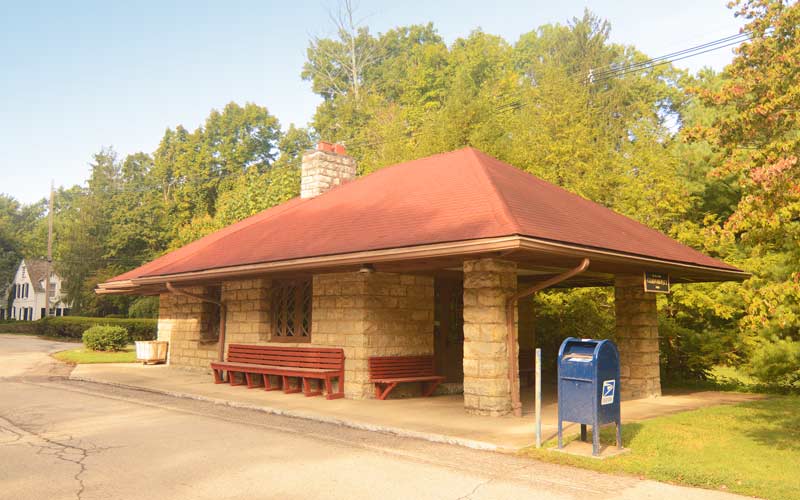
Harrods Creek became an important river port in the area in the late 1700s, by 1874 the Louisville, Harrods Creek and Westport Railroad had reached Goose Creek. “Gentleman Farms” in the area where a mix of farm life and urban dependent wealth that put an emphasis on aesthetic design.
Glenview evolved from an early horse farm to the Fincastle Club in the late 1880s, a recreation and social spot for Louisville’s elite. As more families (including the Binghams, Belknaps, and Ballards) moved into the neighborhood in the early 1900s the club closed and became part of the Bingham’s Melcombe estate.
Dominated by narrow roads winding through sweeping landscapes, natural rock out-croppngs and stone walls cut a path for roads surrounded by a tree canopy that breaks away to reveal broad meadows and glimpses of majestic homes. The proximity to the Ohio River’s streams, wetlands, and floodplain divide the neighborhood with ridges and glens that guided the placement of roads, the combination of forest and meadows create a habitat for abundant wildlife.
In 1904 the railroad was converted to the electric powered Louisville & Interurban Railway. By the 1930s the automobile had taken over, and in 1935 the Interurban had been abandoned. Three former rail stations still stand, the Glenview Post Office, one at the entryway to the Chance School on Lime Kiln Ln., and one on Longview Ln. at Ladless Hill.
The last of the Country Estates was built in 1938, and since then many properties have been parceled off, piece by piece, to be subdivided.
The area can be divided into three distinct areas; Lime Kiln Ln., Glenview Ave., and the River Road corridor. The River Road corridor only has access from River Road and includes Longview Ln., Boxhill Ln., Woodside Dr., and Rockledge Dr.
Bordered by River Rd to the north, Lime Kiln Ln. to the east, Brittany Woods Circle to the south and the Knights of Columbus property on River Rd. to the west.

